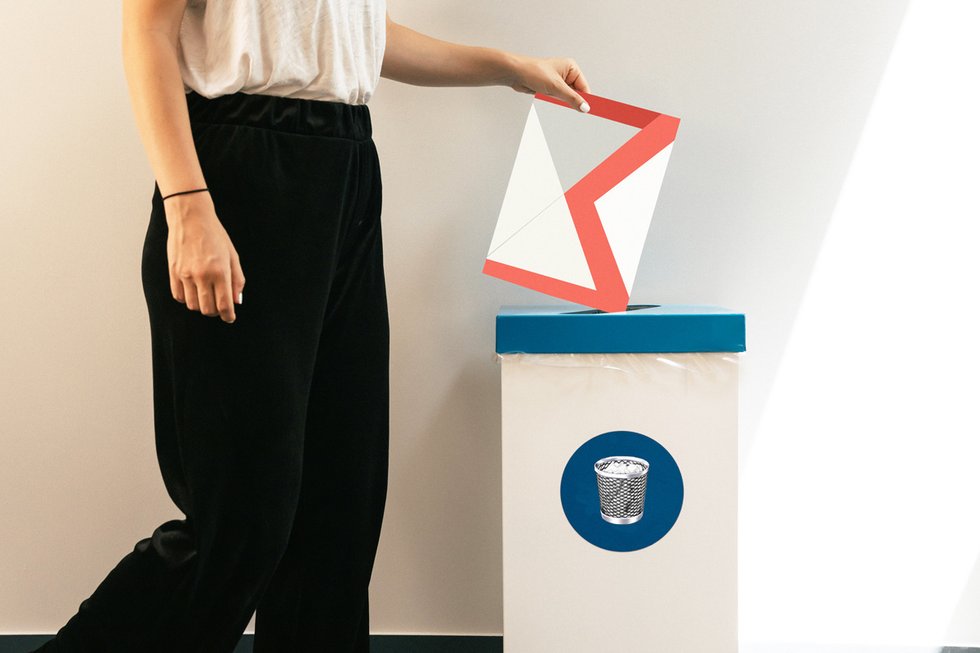Going green: How to Reduce Digital Pollution
Nov 12, 2019
5 mins

Digital pollution has no smell, no colour and no apparent trace, but it very much exists. It might seem invisible, but its carbon footprint is so high that if it were a country, it would be the third largest energy consumer in the world. Why do new technologies cause so much pollution? Moreover, how can we limit the environmental impact of our digital consumption? And how can we be greener even when we are in front of a screen?
What type of pollution does digital technology cause?
The digital sector creates several types of pollution. First there’s the pollution involved in manufacturing electronic devices. A United Nations University study calculated that the manufacture of an average-sized computer and monitor takes at least 240kg (530lb) of fossil fuel, 21.8kg (48lb) of chemicals and 1.5 tonnes of water. Despite this resource-hungry process, the UN estimates that we discard 20m to 50m tonnes of e-waste every year.
What’s more, there is no international recycling legislation for electronic waste, which means the disposal of these devices isn’t regulated. It is difficult, as single users, to reduce our contribution to pollution. All we can do is extend the lives of our computers or mobile phones to the max and choose an eco-responsible manufacturer. Yes, a few do exist, such as Fairphone—one of the first smartphone companies to make ‘ethical’ phones out of recyclable materials—which keeps people, morals and the planet in mind.
However, during the lifespan of our electronic devices, there is another type of contamination that we have more control over: our daily digital consumption. Our internet consumption in one year is responsible for 2% of greenhouse gas emissions—the same percentage as global air travel over the same period. Yet there are very few Britons who are aware of their digital carbon footprint.
This type of pollution is mainly due to information stored in huge data centres that consume a lot of energy. No, your files are not really stored in the cloud! Some of these data centres are the size of a football stadium, containing thousands of online computers and operating 24/7. Data centres are constantly storing and sending emails, videos and documents. They require huge amounts of power as well as adequate cooling systems.
Our main culprit? The email
Sending an email is just a simple click of the mouse, right? Apparently not. This transfer requires a lot of energy: your message passes through an Internet Service Provider, reaches its data centre and is then redirected to the recipient’s data centre.
In addition, an email stored in an email account for one year emits 19g (0.67oz) of CO2. And sending an email and copying 10 people multiplies CO2 emissions by four.
Another alarming figure: sending 33 emails of 1 MB to two recipients every day produces 180kg (397lb) of CO2 a year—the same as driving 621.3 miles by car. Each year, 293,000m emails are sent globally, of which 80% are never opened … you do the maths!
Email use is not the only way we are guilty of CO2 emissions. Every time we do an internet search, our request covers thousands of miles of cables. Having several tabs open at once also consumes energy because each web page that remains open is continuously connected to its server. Streaming a video on your mobile using 4G consumes 23 times more energy than streaming it on wifi because mobile data repeatedly sends signals to the cell towers.
Finally, if you are fond of cryptocurrency, be aware that bitcoin also uses a huge amount of energy: an estimated seven gigawatts of electricity, or 0.21% of the world’s supply, according to researchers at the University of Cambridge. The university’s online tool also estimates that Bitcoin uses the same amount of energy as the whole of Switzerland over the course of a year.
The companies going green
Some companies are tackling digital pollution head on. One multinational that is hitting eco-goals ahead of schedule is HP. In March 2019, the printing and imaging company announced that it has achieved 100% zero deforestation associated with HP-branded paper, two years ahead of schedule. And paper-based packaging will follow in 2020. The company has lowered its carbon footprint and energy consumption by 33%, and 30% of the plastic used in its printers is recycled.
In Silicon Valley, the four most powerful tech companies in the world, Google, Apple, Facebook and Amazon (GAFA), have also committed to power their servers with 100% renewable energy—solar panels, wind turbines and hydroelectric dams. Google and Apple claim that they have already achieved this, while Facebook should reach that goal by 2020, and Amazon says it’s half way there.
Other companies, however, lag way behind, including Netflix. The Greenpeace website Clickclean, which reveals the online content providers powered by renewable or dirty energy, shows that the streaming service uses fossil energy—30% from coal, 26% from nuclear energy. Only 17% of Netflix’s data centres are powered by clean energy sources.
What can you do?
Obviously, going back to pen and paper isn’t an option, but we can limit our carbon footprint by making small, simple changes that can help to reduce CO2 emissions.
1. Manage emails more efficiently
- Whenever possible, avoid sending useless messages. If you need to say something to a coworker, for example, get up from your desk and go talk to him.
- Use an internal messaging tool, such as Slack. It consumes less energy than emails.
- Do not copy lots of recipients on an email if it is unnecessary.
- Check an email before sending it to avoid the notorious follow-up: “Sorry, in my previous email I forgot to attach the file.”
- Use an anti-spam tool and regularly empty your recycle bin and spam folder.
- Unsubscribe from all newsletters that you don’t read with the help of Cleanfox.
- Stop reading your emails continuously!
- Assign a couple time slots a day to read and reply to emails. Not only will you be doing something for the planet, but you will also become more efficient as your work will have fewer interruptions. According to a Loughborough University study led by Professor Tom Jackson, a leading expert in email communication, it takes 64 seconds to re-focus on the task you were completing before you opened the email.
- Use a USB if you need to transfer a file to a coworker.
- When you have to send a large file, choose a file hosting service that uses a download link on a website—such as WeTransfer, Google Drive or OneDrive. This prevents the file from being stored on multiple servers. If you use a link it will only be stored on the server that hosts it.
- Compress the files you send by email.
2. Use your browser better
- Use eco-responsible search engines, such as Lilo or Ecosia, to reduce your carbon footprint.
- Be precise when you search. If the keyword you use is the right one, you will save the energy needed to travel about 40km (24.8 miles) by car.
- Write directly in the address bar of the browser—not in the search engine— when you go to visit a page that you have visited before. You will be directed straight to the website, which prevents your search from going back through the search engine and/or data centres.
- Use bookmarks to avoid repeating identical searches.
- Don’t forget to close the tabs you’re not using.
3. Disconnect more often
- Disconnect whenever you can, if your work allows it. You don’t have to spend all day connected to Google news or social networks.
- At home, unplug your modem or router at night and when you’re away to save electricity.
- Disable mobile notifications.
- Remove unused applications by tracking your habits with the Space app (available for iOS and Android).
- Delete your old MySpace account or YouTube videos posted years ago. They are still stored on servers and create pollution for nothing.
And finally…
- Forget about HD (high definition). Try watching your favourite series in low resolution. When streaming, you consume between four to ten times less energy than watching in high definition. It’s not easy, but it’s for a good cause!
- It might be hard to believe, but sometimes it’s more eco-friendly to print a document. This applies if a document has more than four pages and takes more than 15 minutes to read. Print in black and white, double-sided and two pages per sheet.
Half of the world’s population is online, and these numbers are on the rise. Digital pollution remains a great mystery, but it’s an important issue that we all have to get involved in, both individually and on a corporate level.
Of course, this article will also end up stored on a server, hundreds or thousands of miles from your home. But we trust that the good actions you will take after reading our advice, will compensate for your carbon footprint!
One last tip? Watch this video: How to: Be Green at Work
Translated by Sunita Maharaj-Landaeta
Follow Welcome to the Jungle on Facebook and subscribe to our newsletter to receive our best articles.

More inspiration: Inspiration for workers

From hobby to side hustle: 10 steps to turn your passion into a career in 2025
Have you been waiting for the right moment to turn what you love into a paid gig? 2025 is your time!
Dec 18, 2024

Patience, balance, and multitasking: How parenthood shaped my career
Parenthood changes everything—including your career. These working parents share exactly how.
Dec 11, 2024

The traits of a great boss (and how they make your work life better)
What makes a great boss? Effective leaders do more than manage tasks—they create a workplace where people feel supported, encouraged, and inspired.
Nov 13, 2024

Leading without limits: How to shine as a leader, title or no title
Lab expert Ginny Clarke explores how being a leader isn't just reserved for execs ...
Apr 09, 2024

How our burnt-out society can finally get some rest
Alex Soojung-Kim Pang unveils transformative strategies for slowing down our fast-paced lives.
Mar 19, 2024
The newsletter that does the job
Want to keep up with the latest articles? Twice a week you can receive stories, jobs, and tips in your inbox.

Looking for your next job?
Over 200,000 people have found a job with Welcome to the Jungle.
Explore jobs